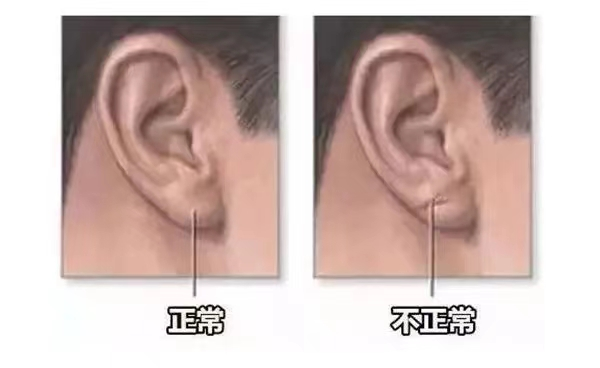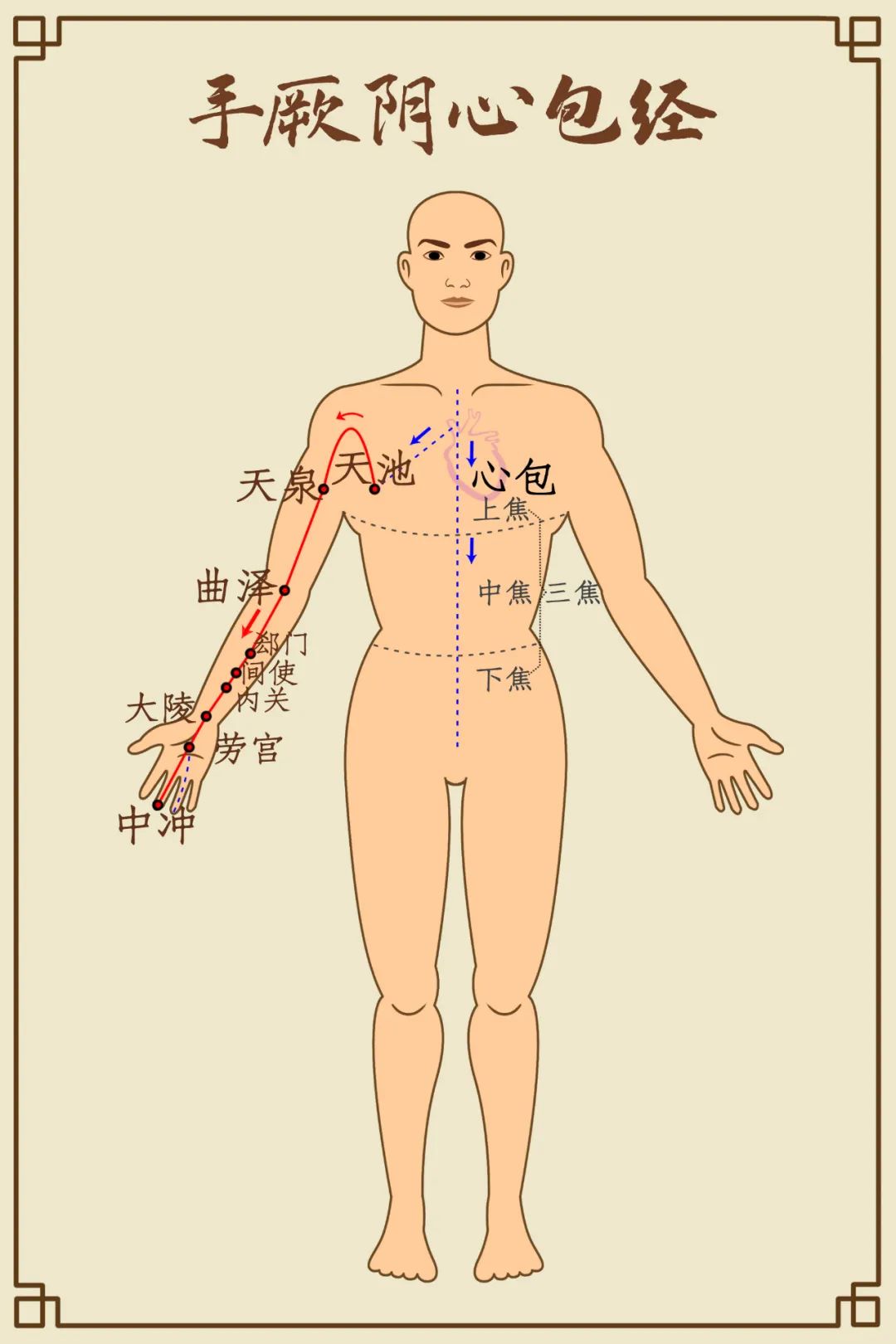The blood in the human body is easy to flow when it is warm, and it is easy to stagnate when it is cold.
Therefore, in autumn and winter, people with health problems such as high blood pressure, arteriosclerosis, and coronary heart disease should be especially vigilant to prevent the onset of diseases.
More than 500,000 people die suddenly from heart disease in China every year, and December to January is the outbreak period of myocardial infarction and angina. The stimulation of cardiovascular and cerebrovascular vessels by low temperature in winter is one of the main causes of heart problems.
If we can pay attention to everything in our daily life, we can protect our cardiovascular and cerebrovascular and heart well. But if you suddenly notice these changes on your face, it means that your heart is already sending "warning signs" to you, so be sure to pay attention!
Whether the heart is good or not, you can know it by looking at the face!
Years of clinical research in Chinese medicine have found that when a disease occurs, there are often four changes in the facial features: qi, color, shape and posture. The five colors "white, yellow, red, blue, and black" represent different physiological and pathological conditions.
Changes in complexion appear first, as early as a decade or two in advance. Color diagnosis can be qualitative, quantitative, and localized. Therefore, the ancient divine doctor Bian Que was able to observe the face and know the condition at a glance.
01 | Striated folds at the base of the nose
When there is a heart problem, the most accurate point of reaction on the face is at the base of the nose, which is called the "heart color".
If there is a change in color, or if there are corresponding folds, it may indicate a heart disease of varying severity.
There are generally 3 folds in the heart color, one above the heart color, the second one may appear in the middle of the heart, and the third should appear below the heart color, this situation is called "nasal fold heart sign", and the appearance of folds indicates that the cardiovascular system has been blocked by more than 50%.
And if there is a change in the color of the heart, it is also a sign that a disease is occurring.
When the heart is pale, it belongs to heart qi deficiency; When it is pale white, it belongs to the evidence of heart and blood deficiency;
When the heart is yellow and dirty, it means that there is phlegm and dampness, which often appears in obese people.
When the color of the heart turns blue-purple, it means that the heart is congested, and if it is not dredged in time, it will often block the arteries and blood vessels, and angina pectoris, myocardial infarction and so on may occur.
02 | Folds appear on the earlobes
The ear has the heart's reflex zone, and when there is a heart problem, warning signs also appear on the ear. If there are folds on the earlobe, it may reflect problems such as high blood lipids, high blood viscosity, and insufficient blood supply to the heart and brain.

There will be a slight depression in the center of the normal earnail fossa, about 1~2 mm, and the color is sharp and ruddy. When the human body has cardiovascular stenosis, insufficient blood supply to the myocardium, myocardial infarction and other heart diseases, this area will undergo corresponding changes.
03 | The lips and tongue are bluished
The tongue or lips appear dark purple or have ecchymosis, which is usually caused by impaired blood circulation, which is blood vessel congestion.
If there is ecchymosis on the tongue, accompanied by palpitation, shortness of breath, even insomnia, dreaminess, tingling in the precordial area, etc., it indicates that there may be cardiovascular disease; If it is accompanied by dizziness and headache, it may indicate that there may be cerebrovascular disease.
04 | The neck becomes thicker
From clinical experience, people with thick necks tend to have relatively high blood pressure, blood lipids, blood sugar and other indicators, which are closely related to heart problems.
In general, if the neck circumference of men is more than 39 cm and that of women is more than 35 cm, it means that the neck is thicker.
If the neck circumference is exceeded, you can do some neck exercises when you are free, such as nodding your head back and forth, left and right, rotating your neck 360 degrees, etc., to reduce the accumulation of neck fat.
Note: To measure, place the tape measure horizontally on the upper edge of the seventh cervical vertebra at the back of the neck (the most protruding point of the back of the neck when the head is bowed) and below the Adam's apple in front of it to complete the measurement.
Take care of the heart, three warms + three tricks
For people with a bad heart, winter is a hurdle, because heart disease is easy to break out in winter, and the treatment effect after illness is poor, and there will even be a fatal threat.
"Three warmth" protects the heart
1. Wake up warm: wake up thoroughly before getting up
People with heart disease and high blood pressure should not wake up too quickly after waking up in the morning, but should lie on the bed to warm up their bodies and move their limbs and heads for 5 minutes, otherwise it will easily lead to sudden changes in blood pressure.
It is recommended that people with cardiovascular and cerebrovascular diseases should not be in a hurry and move slowly:
-
Do not have actions such as "turning your head sharply" to avoid accidents;
-
-
Avoid movements that require sudden force, such as playing badminton and basketball;
-
-
Do not change your position suddenly, such as changing from a squatting position to a standing position, which may cause temporary cerebral ischemia, unstable standing, blackness in front of your eyes, fainting, etc., and it is easy to fall;
-
You can also have a glass of warm water in the morning to thin the blood, activate the gastrointestinal tract, and promote detoxification and urination.
2. Wash warmly: soak your feet in warm water
In winter, if you wash your face and brush your teeth directly with cold water, it will irritate the blood vessels, and it is recommended to use warm water at 40~45 °C to reduce the irritation of the blood vessels.
Soak your feet in hot water for 15~20 minutes before going to bed at night, which can promote blood circulation in the blood vessels of the feet and also help the quality of sleep. At the same time, the water temperature should not be overheated when bathing, and it is advisable to keep it at 37°C~40°C.
Excessively high temperatures will increase the burden on the heart, resulting in cardiac ischemia and hypoxia.
3. Toilet warming: Wear warm clothes and go to the toilet again
The elderly are accustomed to getting up at night, some people have symptoms of frequent urination and urgency, and suddenly go to the toilet at night, the bladder is emptied quickly, and the cold stimulation from the outside world can easily induce hypotension, causing transient insufficient blood supply to the brain, resulting in micturition syncope.
It is recommended that even if you have some urgency to urinate, you should get up slowly, sit on the edge of the bed for a few minutes, dress warmly, and then go to the toilet.
At the same time, it is not advisable to hold your breath too hard during defecation. Excessive force in defecation can easily cause an increase in abdominal pressure, blood pressure and a rapid heart rate, which makes the myocardium prone to severe and long-lasting acute ischemia and even myocardial infarction.
Straining to hold your breath during a bowel movement can lead to dissecting aneurysms or rupture of large blood vessels, which can also be life-threatening.
"Three tricks" are good for the heart
1. Eat more red foods
The theory of traditional Chinese medicine health preservation says that "five colors enter the five organs", red food into the heart and blood, which is conducive to nourishing the kidneys and promoting blood circulation, so eating more red food is very beneficial to protect the heart and brain.
Tomatoes, red peppers, apples, hawthorns, red dates, goji berries, sweet potatoes, red beans, etc. are all good choices.
It is recommended that everyone drink more black tea, the recipe is very simple, only jujube and hawthorn two common foods.
Two black tea practices: take 15 grams of dried hawthorn slices, 5 pitted jujubes, soak these two things in water every day to drink, you can nourish the heart, replenish the heart and blood, and dissolve blood stasis.
2. Frequently scrape the pericardial meridian
In the opinion of many people, the best cardiotonic medicine is to take ginseng, but in fact, in the eyes of traditional Chinese medicine, the best cardiotonic effect is to massage the pericardial meridian or pluck and tap the pericardial meridian. Because massaging the pericardial meridian has a similar effect to taking ginseng, or even has a better effect.
The pericardial meridian mainly has the following nine acupuncture points, which are in order according to the running line: Tianchi, Tianquan, Quze, Ximen, Jian Envoy, Neiguan, Daling, Laogong, and Zhongchong.

The pericardial meridian, also known as the "life-saving pericardial meridian", is the meridian in charge of the periphery of the heart, such as pericardium and cardiovascular. Pericardial obstruction will cause chest tightness and heartache, and in severe cases, it will cause coronary heart disease, angina, myocardial infarction and even death.
The pericardium runs along the midline of the arm, which is the line corresponding to the middle finger, and the straight one runs from the breast to the middle finger.
The blocking point of the pericardial meridian is on the pericardial meridian of the upper arm. Divide the Tianquan acupoint into three parts between the Quze acupoint, and the blocking point of the pericardial meridian is located in the third closest to Quze. Each person is slightly different, some people are a little higher, some are a little lower, and the specific pain points shall prevail.
If it hurts to press at this block, it means that the pericardial meridian is blocked here, and there is a cardiovascular problem. Some people often feel chest tightness, angina, or coronary heart disease or early myocardial infarction when they go to the hospital for examination, this block point can be very painful. Scraping this block point can also be used as an emergency first aid measure for myocardial infarction and angina.
3. Often pat the elbow socket
"Lingshu • Evil Guest" cloud: "There is evil in the lungs and heart, and its qi is left in the two cubits (in the lungs, it is rulers, and in the heart, it is less than the sea. "If you are usually free, you can also often pat the elbow socket, there are actually two acupuncture points hidden here, one is the Qi Ze acupoint of the lung meridian, and the other is the Qu Ze acupoint of the pericardial meridian. By patting the elbow fossa, these two acupuncture points are dredged at the same time, and there is no need to bother to find the acupuncture points, killing two birds with one stone.
